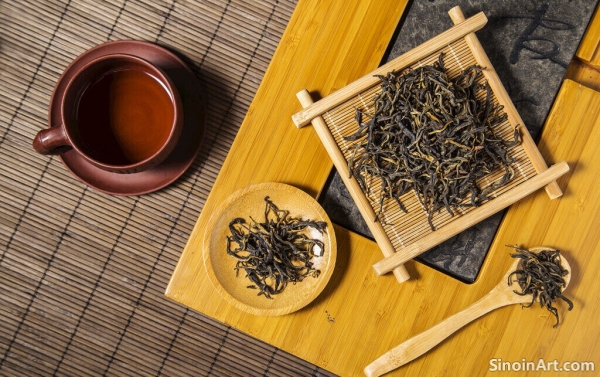The Timeless Tradition: An Introduction to Chinese Tea
|
Chinese tea is more than just a beverage; it's a deeply ingrained part of Chinese culture, with a history stretching back thousands of years. From ancient rituals to modern-day social gatherings, tea has played a vital role in Chinese society. The preparation, serving, and consumption of tea are often steeped in tradition, reflecting the importance and reverence it holds. It is an integral part of Chinese history and culture.  The story of tea begins in China, with legends and historical records pointing to its use as early as the 3rd century AD. Originally used for medicinal purposes, tea gradually became a popular social drink, enjoyed by all social classes. Over time, specific tea growing and brewing techniques developed and spread throughout the country. The development of tea over the centuries has greatly shaped Chinese culture.  China is home to a vast diversity of tea types, each with its unique flavor, aroma, and processing methods. From the subtle flavors of green tea to the robust tastes of black tea, and the complexities of oolong and white tea, the range of available types of tea is large and varied. Each type has its own unique history and processing techniques.  The tea ceremony, known as Gongfu Cha (功夫茶), is a traditional art form that emphasizes the ritualistic preparation and enjoyment of tea. This practice highlights the care, patience, and mindfulness that are central to the appreciation of tea. The tea ceremony, and its various iterations, are central to the culture surrounding Chinese tea. Chinese tea is not just a drink, it's a connection to history, a celebration of culture, and an opportunity to slow down and appreciate the simple things in life. It is an important part of daily life, and reflects the culture of China as a whole. Its enduring popularity is a testament to its value within Chinese culture. |
Tag : Chinese Tea, Tea History, Tea Culture, Types of Tea, Tea Ceremony
Related information
- The Future of Chinese Tea: Sustainability and Modern Innovations
- The Art of Tea Pairing: Complementing Chinese Cuisine
- The Refreshing World of Green Tea: Health Benefits and Brewing Tips
- The Bold Flavors of Black Tea: Exploring Hong Cha
- The Tea Tray: Organization and Presentation
This article discusses the future of Chinese tea, addressing issues of sustainability, ethical practices, and innovative technologies that are shaping the tea industry for future generations.
Explore the art of tea pairing within the context of Chinese cuisine. Learn which teas best complement different dishes and how the right tea can enhance the overall dining experience.
This article focuses on green tea, discussing its health benefits, popular varieties, and offering practical tips for brewing the perfect cup.
This article explores the world of Chinese black tea (Hong Cha), examining its history, unique characteristics, and popular varieties, and offering brewing suggestions.
This article examines the importance of the tea tray in Chinese tea ceremonies, discussing its various forms, materials, and the role it plays in the organization and presentation of tea sets.